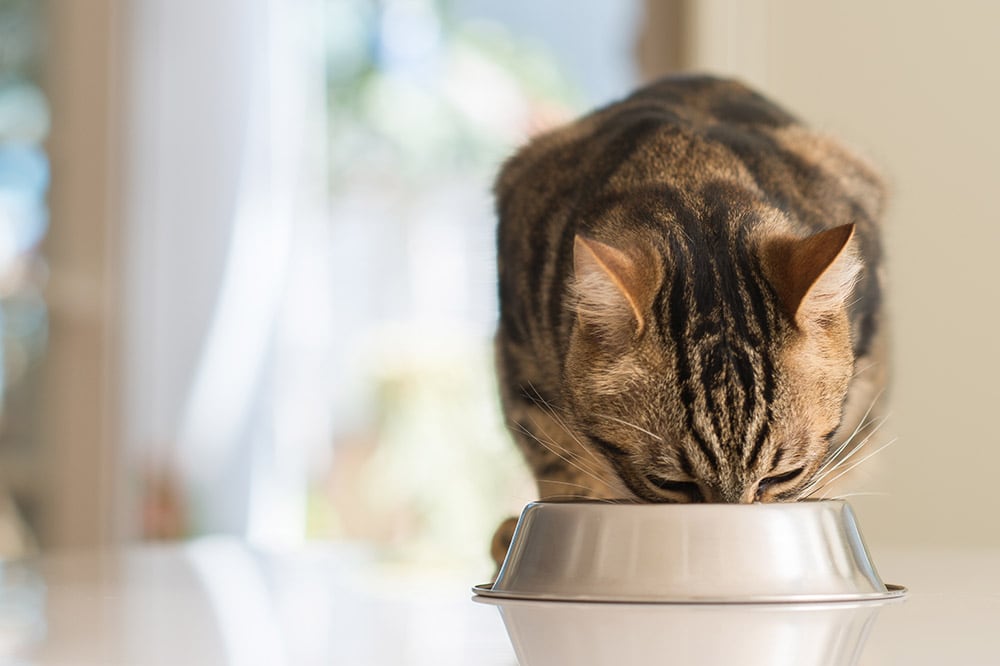How to Give a Cat a Flea Bath in 6 Easy Steps (With Pictures)

Updated on
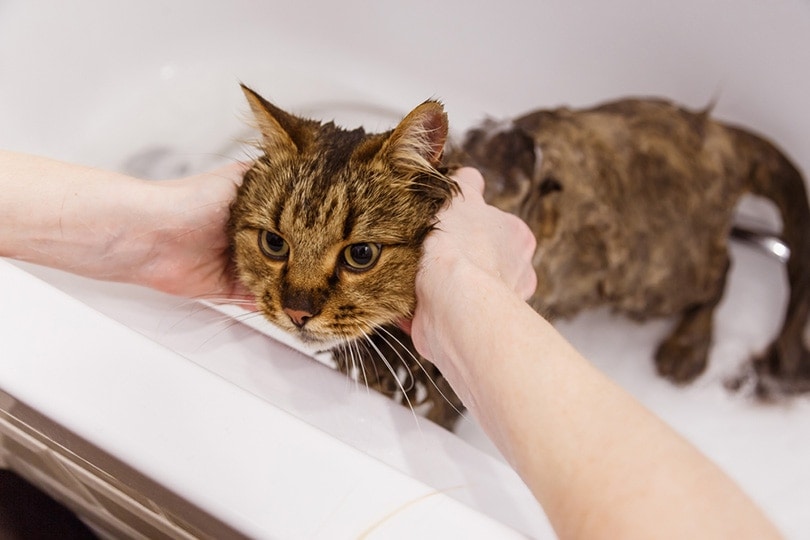
If your cat has a flea infestation, it can be a harrowing problem to fix. A flea life cycle consists of four parts: egg, larva, pupa, and adult. These life cycles are taking place on your feline companion all at once. To get rid of fleas completely, each life cycle must be stopped and destroyed.
Putting your cat in the sink or tub to wash away as many fleas as possible might seem like a good idea, but it’s important to follow up with different methods of flea control to thoroughly eliminate the infestation.
In this article, we look at six easy steps for giving your cat a flea bath and what you can do to make sure these pesky parasites stay gone for good.
 Before You Begin
Before You Begin
Many cats are notorious for hating water. If your cat isn’t happy about getting wet, giving them a bath may seem like a nightmare. For this reason, getting everything that you need before you start will make the experience easier for both of you.
Gather your supplies near you within easy reach. You will need:
- Another person, if possible, to help you contain the cat
- Flea shampoo (only use flea shampoo that specifically indicates that it’s safe for use on cats)
- Flea comb
- Several towels
- Cat treats and toys
- Cotton balls
- Plastic cup for rinsing, if desired
- Deep bowl of warm water
Once you have your supplies ready, fill the tub or sink. Running water can make cats anxious, so it’s best to have the basin that you’re using already filled with warm but not hot water before the cat enters the room. Just a few inches deep will be enough. If you can, make the room as warm as possible by closing a door or turning up your home’s heat until the bath is over.
You may want to lay a towel on the floor of the tub or sink before you fill it with water. Cats can slip on the surface, making them panic and scramble to get out. Giving them a place to stand comfortably without slipping can keep them a little calmer.
Before you bring your cat into the room, add flea shampoo to the bowl of warm water, make a soapy mixture, and set it aside.
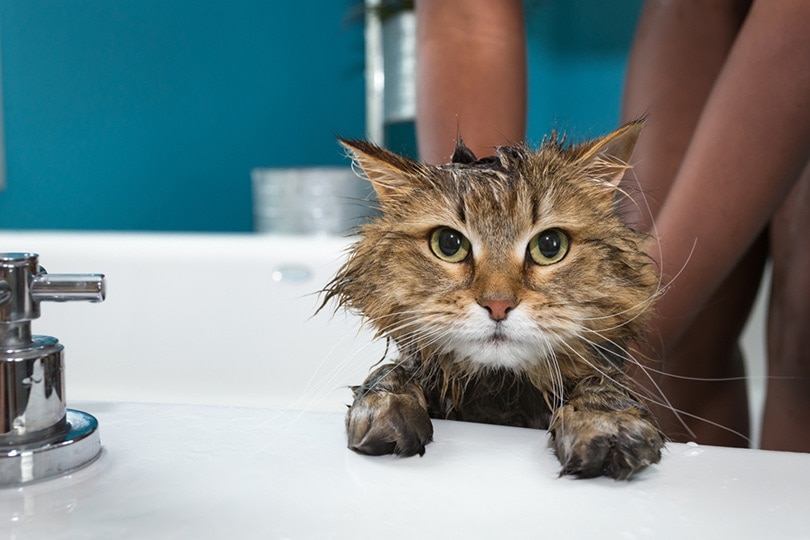
The 6 Steps to Give Your Cat a Flea Bath:
You have your supplies and a filled tub, so you’re ready to begin!
1. Place your cat into the tub.
Gently lower your cat into the water feet first. Offer them treats, and distract them with toys if they seem anxious. Try to make this a pleasant experience for them. Speak softly and calmly to try to relax them. At this point, you may wish to put cotton balls in the cat’s ears to keep water from leaking into them. Water in the ears can make the cat uncomfortable. Also, if the ear canals don’t completely dry, they can be a haven for bacteria to grow, causing ear infections.
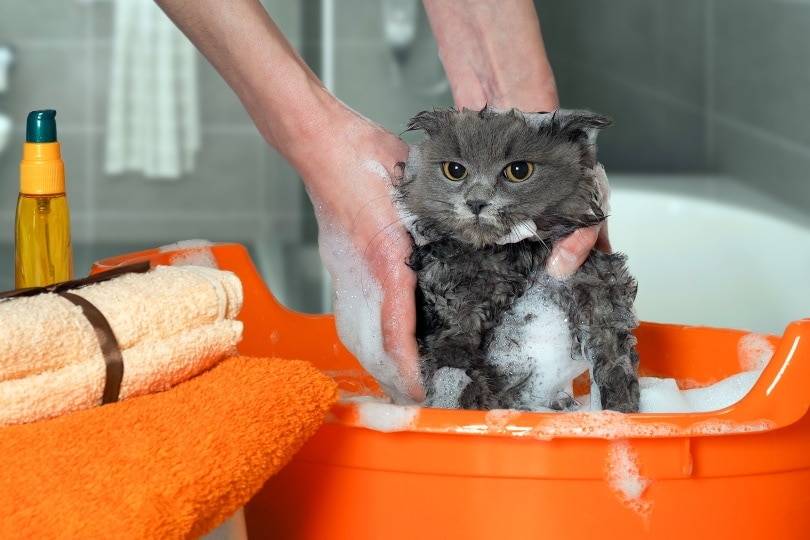
2. Gently wet the fur.
Using your hands or a plastic cup, gently begin to scoop the water and wet the cat’s fur. Start with the legs, working upward until the entire coat is wet. Be sure to avoid pouring water into the cat’s eyes. You can use the showerhead or sink hose for this too. Keep in mind that some cats may freak out if they’re sprayed with water.
3. Apply the flea shampoo.
When your cat’s fur is saturated, grab your flea shampoo and apply a line down their back, from the neck to the tail. Then using your hands, make a ring of shampoo around your cat’s neck to stop fleas from running to the head and face for protection.
Gently massage the shampoo all over your cat’s body, paying special attention to the top of the head, backs of the ears, neck, tail, and belly. Fleas hide in dark, warm areas.
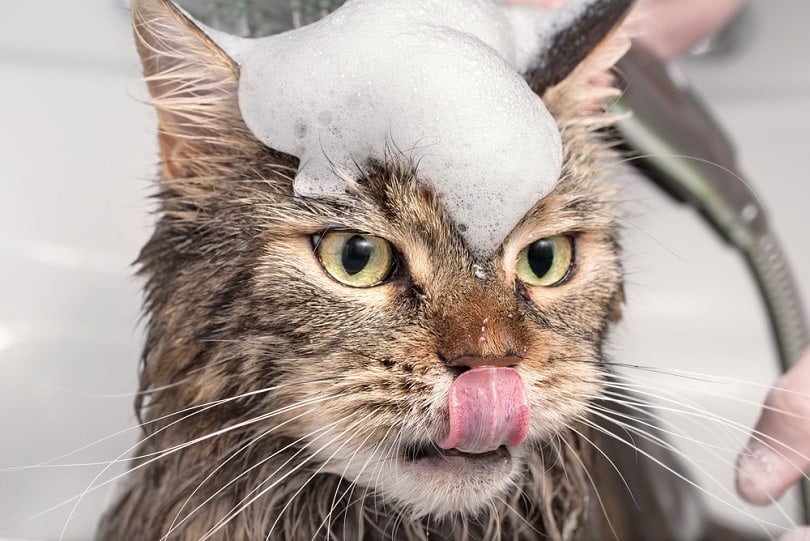
4. Use the flea comb.
While you’re lathering, it’s normal to see fleas running through your cat’s coat. They’re trying to find safe areas. Using a flea comb, you can comb the shampoo through the coat, covering more area and grabbing scurrying fleas in the process. Rinse the fleas off the comb by running it through the bowl of water and flea shampoo that you set aside earlier. Try to remove as many fleas as you can during this process.
5. Rinse your cat.
Once you’ve combed as many fleas out of your cat’s coat as you can find, it’s time to rinse. Drain the tub to get rid of the soapy water. You can use a cup, your hands, shower head, or hose for rinsing. Make sure you’re using clean water, not the same bathwater that your cat is standing in. This will require you to run the water or refill the tub. If you run the faucet, you can fill the cup and slowly pour it over your cat. Do whatever your cat is the most comfortable with.
Once you think that you have all the shampoo rinsed out of your cat, rinse them one more time just be certain.
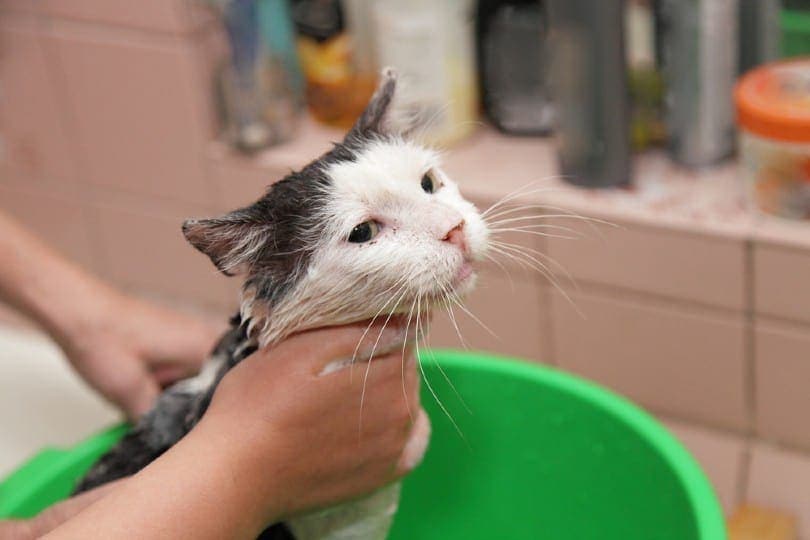
6. Dry the cat.
Have a towel ready. Lift your cat out of the tub and place them on the towel. If you see any fleas running while you’re rubbing your cat dry, use the comb to grab them and put them in the bowl of soapy water. Gently wipe your cat’s face to get rid of any moisture, and take the cotton balls out of their ears.
If your cat is agreeable to it, use a blow dryer on them on the lowest setting to help them dry faster. If not, continue to towel-dry them. Swap out wet towels for dry ones as necessary.
After the Bath
Some flea shampoos have parasite-fighting ingredients that will continue working days or weeks later to control fleas. This is good, but it doesn’t mean the fleas will stay gone forever.
If your cat has fleas, it means fleas are around your home. They can burrow in carpet fibers, furniture, and curtains. If your cat is in your bed, that means fleas can be there too. Fleas don’t discriminate — they will bite anyone and anything that has a blood supply, including you, other family members, and pets.
The first thing to do once your cat is dry is thoroughly clean your home. Vacuum every surface, including furniture. Wash all bedding, furniture covers, and curtains. If you have a steam cleaner, use it on hardwood floors to kill any fleas that were able to hide from the vacuum. Be sure to keep your cat away from the areas where you’re cleaning, or they may become infested again, which will require giving them another bath. You may want to consider cleaning the house before bathing your cat, though only if you’re certain that your cat will be entirely flea free after their bath.
After all this, talk to your vet about flea control. Medications can be given to your cat to keep this from happening again. These medications are available in chewable, pill, or topical liquid forms that are applied to the cat’s skin. Many of these products will kill any remaining fleas on your cat after the bath and work to prevent reinfestation for 30 days.
 Final Thoughts
Final Thoughts
Cat flea infestations can be frustrating to deal with, but giving your cat a flea bath is an effective way to eliminate as many fleas as possible at one time.
Remember to use a flea shampoo that is suited for cats, and try to make the bath as gentle and relaxing as possible. After the bath, take the time to remove fleas around your home. Consider using monthly flea-control products to keep fleas and other parasites off your pets and out of your home. Your vet can help you decide which product is right for your cat.
Featured Image Credit: Vladeep, Shutterstock
 Before You Begin
Before You Begin



